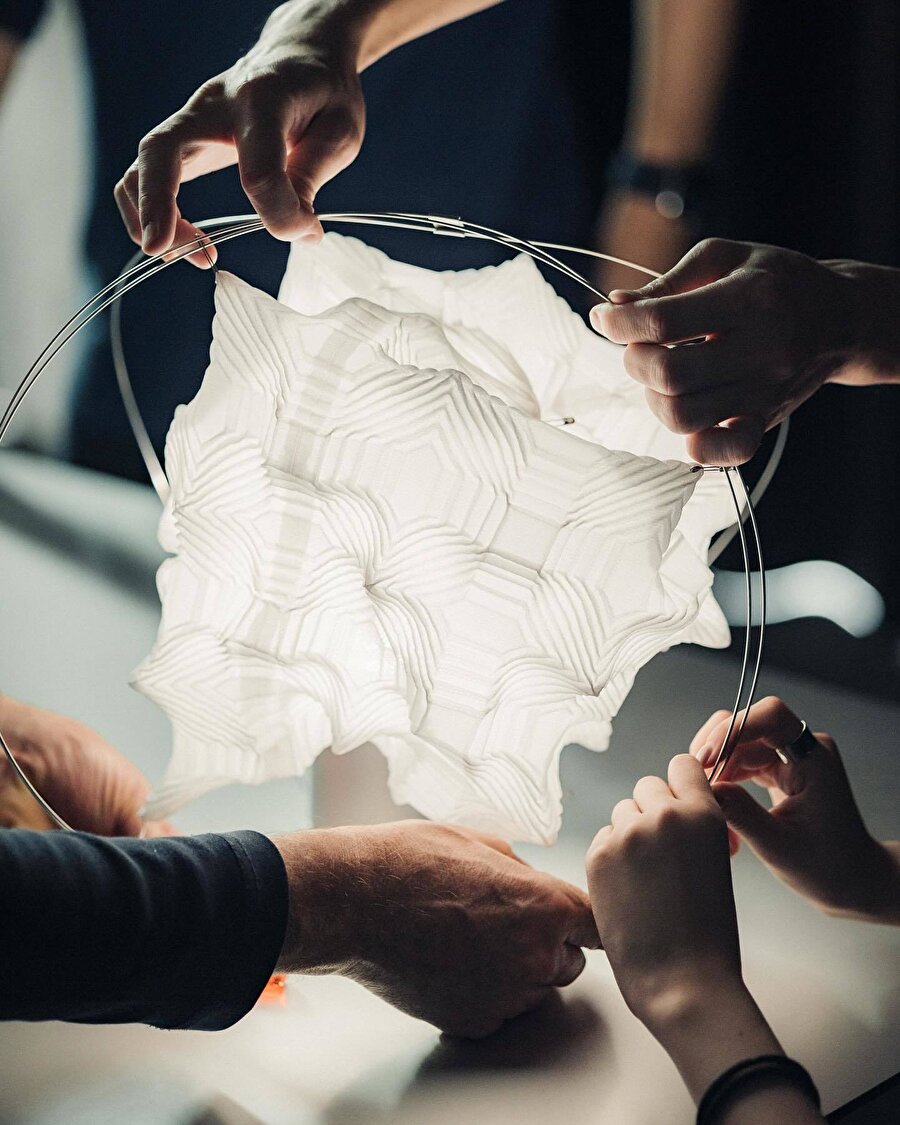Milano Tasarım Haftası 2025 kapsamında tasarlanan proje: TYPE-XIII Atelier Oï
09 NİSAN 2025 , ÇARŞAMBA 17:00

Milano Tasarım Haftası 2025 kapsamında A-POC ABLE ISSEY MIYAKE ve İsviçre merkezli tasarım stüdyosu atelier oï, tekstil ile ışık arasındaki ilişkiyi ele alan 'TYPE-XIII Atelier Oï' başlıklı projeyi sunuyor. Proje, tek bir kumaş ve tel parçasının fiziksel dönüşüm potansiyelini inceliyor. A-POC'un giyim üretiminde kullandığı Steam Stretch teknolojisi bu kez aydınlatma alanına taşınarak, ısı etkisiyle biçim değiştiren yüzeylerin ışıkla kurduğu etkileşim araştırılıyor. Sergi, kumaşın yalnızca giysi formunda değil, mekânla ilişkili objelerde de nasıl kullanılabileceğini teknik bir çerçevede ele alıyor.
Projenin merkezinde yer alan O Serisi, ikebana referansıyla düzenlenebilen taşınabilir aydınlatma elemanlarına odaklanıyor. A Serisi ise önceden örülmüş kumaşların tel çerçevelerle birlikte farklı konfigürasyonlara göre yeniden yapılandırılmasına imkân tanıyor. Her iki seride de kumaş, form ve işlev arasında alternatif bir kullanım senaryosu üzerinden değerlendiriliyor. Sunulan sistemler, kullanıcıyı ışık ve malzeme arasındaki ilişkiye fiziksel müdahale yoluyla dâhil etmeye yöneliyor.
@atelier_oi @apocableisseymiyake_official
__
As part of Milan Design Week 2025, A-POC ABLE ISSEY MIYAKE and Swiss design studio atelier oï present “TYPE-XIII Atelier Oï", a project exploring the relationship between textiles and light. The project explores the potential for physical transformation of a single piece of fabric and wire. The Steam Stretch technology used by A-POC in the production of clothing is brought to the field of lighting this time, and the interaction of surfaces that change shape under the influence of heat with light is investigated. The exhibition addresses how fabric can be used not only in the form of clothing but also in objects related to space in a technical framework.
Series O, which is at the centre of the project, focuses on portable lighting elements that can be arranged with reference to ikebana. Series A, on the other hand, allows for the reconfiguration of pre-knitted fabrics with wire frames according to different configurations. In both series, the fabric is evaluated through an alternative usage scenario between form and function. The systems presented tend to involve the user in the relationship between light and material through physical intervention.


